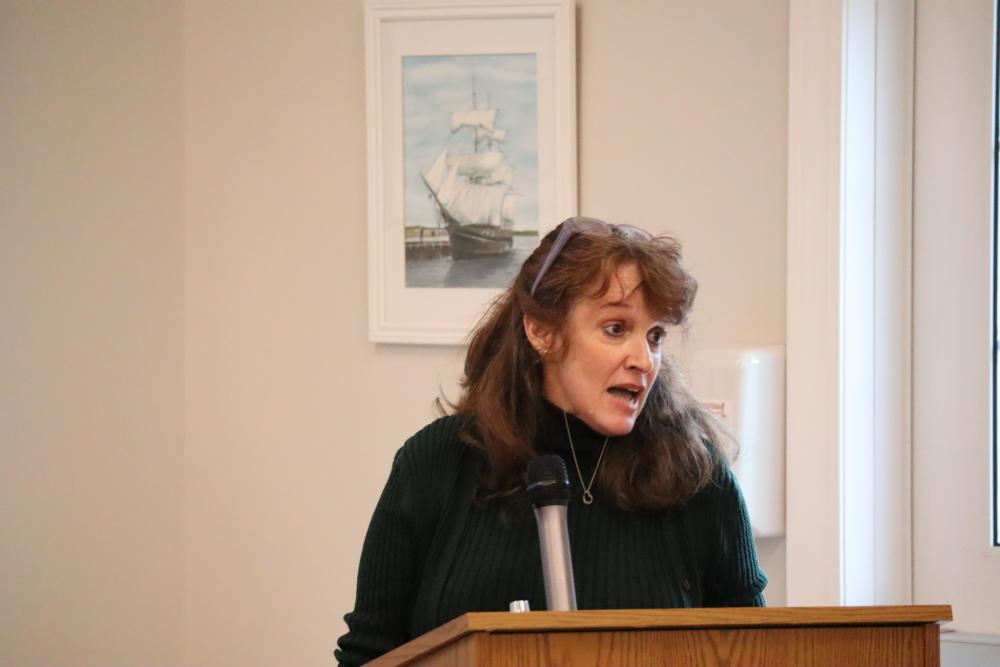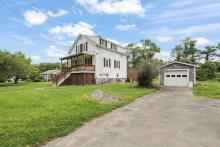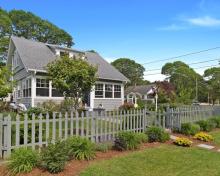Rochester residents, town officials hear from state on Green Community status
ROCHESTER — As representatives of Massachusetts’ Green Communities program gave a presentation to Rochester residents and town officials on Monday, April 10, the word “complicated” was often used.
When asked about how Rochester’s status as a Green Community could cost — or save — the town money, building scientist Paul Raymer said, “These things are complicated — and for me to give you all those scenarios — it really needs to be done project by project.”
Rochester residents will have the opportunity to remove the town from the state’s Green Communities program at the upcoming May 22 Town Meeting.
Rochester voted to become a Green Community in 2019.
A Green Community has to meet certain criteria which includes creating a plan to reduce energy use by 20% within five years and adopting a fuel efficient vehicle purchase policy.
Additionally, Green Communities must adopt the “Stretch Code,” a specialized and more strict building-energy code that “emphasizes energy performance,” according to the Massachusetts Department of Energy Resources.
In return for following these guidelines, a Green Community is eligible for state-funded grants. So far, said Green Communities Regional Coordinator Lisa Sullivan, Rochester has received $425,505 in grant funding.
She added that the town has seen a 14% reduction in energy usage since becoming a Green Community.
However, the requirements of the “Stretch Code,” which aim to improve buildings’ energy efficiency, can be more expensive and extensive than what is required in standard state building codes.
These added costs are a driving force behind efforts to leave the Green Communities program.
Arnie Johnson, who serves as the chair of the Rochester Planning Board and Public Safety Facility Feasibility Study Committee, said that leaving the Green Communities program — and therefore abandoning the state’s “Stretch Codes” — could save a “significant” amount of money on municipal building projects.
He pointed to the proposed plan to renovate the current police station on Dexter Lane, and build a new fire station and fire substation that could cost $37 million as an example.
During a March 14 meeting of the Rochester Public Safety Facility Feasibility Study Committee, architect Ted Galante, who is overseeing the proposed project, said that there are “a lot of elements that are Green Community-related that have an impact on the cost of construction.”
“All this stuff adds up,” said Johnson, referring to extra insulation and triple-paned windows that would be required in a Stretch Code-compliant public safety building. “If you’re talking about a building, or multiple buildings … when you’re talking multi-million dollars, the savings, if we get out of the stretch code, are going to be significant.”
“Stretch Code” requirements can also impact new residential construction and some additions and renovations on existing buildings.
Raymer and Rochester Select Board Chair Woody Hartley are not so sure that leaving the Green Communities program will save money in the long run.
They argue that the state’s basic energy codes — which apply to any construction regardless of a town’s Green Community status — will get stricter until they match the current “Stretch Code.”
“There’s a false premise in that, that all of this is inevitable” said Rochester Planning Board member Ben Bailey.
Some Rochester residents, like Susan Maguire, think that with Town Meeting around one month away, the conversation around this issue may be moving too fast and that residents should have more time to learn about the consequences of leaving the Green Communities program.
If Rochester votes to leave the Green Communities program, said Sullivan, it would be the first municipality in the state to do so.
“Rochester is a very progressive, advanced [and] intelligent community, you’re welcome to join us [in leaving the Green Communities program],” said Bailey.














